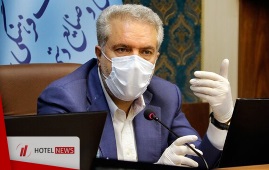
“Corona is a fact, but can the virus stop tourism? Certainly not. For us, the coronavirus is a new experience in dealing with crises that teaches tourism experts around the world how to deal with such a disaster, and thankfully governments are turning this into an opportunity for better planning,” Ali-Asghar Mounesan said, ISNA reported. He made the remarks in a video showcased on Tuesday evening during a prize-giving ceremony in which a select of tourism businesses, tour operators, investors, and hoteliers were honored. “Tourism experts will certainly find a way to deal with this great crisis. As if the measures so far been taken in Iran and all over the world show that we will surely succeed [to make a big rebound] through proper smart planning.” Addressing the attendees to the ceremony, the minister explained; “Investments and the launch of new projects in the tourism sector have been increased dramatically underway across the country. Of these, about 600 are hotel-related projects that show a very promising future, conveying a message that investors see profitable prospects for Iran’s tourism.” Elsewhere in remarks, the official said “We are not saying that tourism should [merely] replace oil [revenues], but tourism can become first [sector of] economy in the country replacing revenues [currently being come from [the export of] mineral and raw resources.” “Tourism can create an easy way to earn and create employment by tapping into the existing historical and natural capacities of the country.” Mounesan has long been attaching importance to tourism as a source of revenue, which could substitute petro-dollars. Back in 2017, he said: “Every single foreign tourist visiting Iran spends an average of $1,200, bringing in income as much as exporting 30 barrels of oil.” Referring to the pandemic and its impacts on the traveling sector, he said: “All the economists in the world have predicted [dramatic] changes and developments for many once-prosperous sectors….. However, the technology is advancing, and smart solutions… will certainly bring changes in the world's economic sectors.” In June, the United Nations World Tourism Organization praised efforts made by Iran’s tourism ministry to manage the travel industry during the coronavirus pandemic. UNWTO Secretary-General Zurab Pololikashvili said in a letter to Mounesan that the country's measures have truly earned plaudits to mitigate the impact on tourism. “A series of measures that the Ministry of Cultural Heritage, Tourism and Handicrafts of Iran has taken, in accordance with the guidelines and recommendations of UNWTO, has truly earned plaudits as an effective practice to mitigate the impact on tourism,” the letter reads. Some experts believe that the coronavirus pandemic may turn tours and travels into luxury items as observing health protocols will raise the cost of travel in the country. Mohammad Ali Vaqefi, the vice president of the Iranian Tour Operators Association, warned earlier in June that with the continuation of the coronavirus outbreak, tourists may prefer individual travel rather than tours, adding that they may also choose to go on a trip by their vehicles and stay in tents or in the nature instead of hotels. In the global scene, part of the new travel puzzle is the jet-set mindset focusing on tough hygiene care and social distancing as cardinal guidelines for slowing the spread of the virus. So the average expenditure will be raised for a typical traveler particularly inbound passengers so lesser ones can afford to buy privacy and space and safer travel amenities. Meanwhile, deputy tourism minister Vali Teymouri, has said the tourism industry of Iran will get back on the right track sooner than expected thanks to measures taken to tackle the spread of coronavirus. “I believe that tourism industry of the country will get back on the right track far sooner than generally expected thanks to the measures taken to deal with the spread of coronavirus in tourist destinations, hotels, stopovers, and all the centers which are affiliated with the Ministry of Cultural Heritage, Tourism and Handicrafts,” Teymouri said. Iran expects to reap a bonanza from its numerous tourist spots such as bazaars, museums, mosques, bridges, bathhouses, madrasas, mausoleums, churches, towers, and mansions, of which 24 being inscribed on the UNESCO World Heritage list. Under the 2025 Tourism Vision Plan, it aims to increase the number of tourist arrivals from 4.8 million in 2014 to 20 million in 2025. The latest available data show eight million tourists visited the Islamic Republic during the first ten months of the past Iranian calendar year (started March 21, 2019).
Create: Aug 5, 2020 Edit: Aug 6, 2020 Regional News
Technique 159 Hang Mirrors Outside Elevator Doors; Hang at least one mirror on each floor by the elevators. Perceived waiting time for the elevator is reduced when guests can look in mirrors. Technique 160 Greet Guests While They Are Waiting to Check-In; Perceived waiting time is reduced when a process begins. Because part of the check-in process is being greeted, when the front desk gets busy unexpectedly, a hotel representative from another department can greet and talk with guests as they wait in line. Technique 161 Tastefully Display Information Inside Elevators; The displaying of information inside guest elevators not only serves to reduce perceived waiting times but is also an outstanding opportunity for advertising your hotel and the area. Displaying appropriate and tasteful information can increase guest engagement. Technique 162 Offer Food and Beverage at the Front Desk When Busy; Providing something small to eat or drink ( e.g., cookie; infused water ) at the front desk serves to reduce perceived waiting times of guests at the desk. Technique 163 Create Strategic Alliances to Permit the Use of Hotel Key Cards at Local Attractions; The hotel should establish strategic alliances with local attractions by which the hotel’s room key can be used to gain admittance to the attractions. Such relationships could reduce/ eliminate the waiting that the guests would experience when purchasing tickets at the attractions. Technique 164 Have Pre-Printed Directions Readily Available; Do guests repeatedly ask for directions for the same place like getting on the highway, the big office park, etc.? The front desk agents should have small pieces of paper with the directions on them readily available. There is no wait for the employee to find it on the Internet and print it or take a time to explain it. Technique 165 Have Maps with Hotel Location Indicated on it; Tourists like to look at maps. Have a map with the hotel location already designated on it. This will save time and ques- tions by the guests and, of course, make it easier to identify where they are. If the guests need to converse with the desk staff they can, if not, they can look at the map and figure out where to go. Technique 166 Use Mobile Roulette Wheel to Reduce Perceived Waiting Times; If check-in gets busy unexpectedly, have an associate from another department roll in a mobile roulette type wheel. Have the guests waiting in line spin the wheel to determine which prize each wins. For example, prizes can range from 1–5 per- cent discounts on room rates.
Create: Jul 29, 2020 Edit: Sep 5, 2020 Hotel Management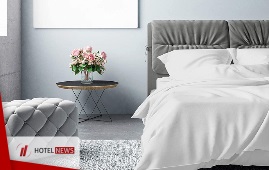
Technique 152 Install a Doorbell Behind the Front Desk; Install a doorbell behind the front desk that the agent can ring when the desk gets busy unexpectedly. The bell can sound in a back-of-the-house area where one or more individuals are cross-trained to operate the property management system. Technique 153 Install a Direct Telephone Line from the Front Desk to the Kitchen; If the front desk gets busy unexpectedly, there should be a direct telephone line that rings from the front desk to the kitchen so that food can be brought out immediately to guests waiting for front desk service. All front desk agents and cooks should be both trained and empowered to act swiftly in such a circumstance. Cookies would suffice in such a situation, but have become relatively commonplace at front desks; there- fore, more creative items such as fudge might have a more powerful effect. Technique 154 Telephone the Guest When His/Her Room is Ready for Check-In; When a guest checks in early, but there is not a room ready, ask the guest if s/he would like to be called when there is one available. If so, make sure that s/he is called in a timely manner; this gesture goes a long way in terms of customer satisfaction. Technique 155 Produce Laminated Room Inspection Checklists; All managers in the hotel should be provided with con- densed laminated guestroom inspection checklists. The check- lists should be small enough to carry in a pocket. When the housekeeping department is stressed, managers from other departments should be called to do room inspections. Technique 156 Post Par-Levels for All Supplies; All departments should have posted par-levels for all supplies. The person who confirms the par-level for the given items should initial the posted par-level sheet. Often, service systems deteriorate because associates do not have the supplies that they need. Technique 157 Analyze Why a Forecast Was Incorrect; If the forecast for a particular area of the hotel was inac- curate, and service quality suffered as a consequence, at the next management meeting a discussion should be held as to why the forecast was inaccurate. This practice is particularly germane to examining lunch and dinner capture rates in the restaurant outlet(s). Technique 158 Put a Bell on the Front Desk;
Create: Jul 25, 2020 Edit: Aug 24, 2020 Hotel Management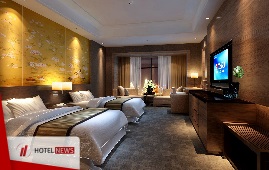
Technique 139 Ask About Travel Experiences; Offering redress for problems not caused by the hotel can be a key driver of guest satisfaction. For example, if a guest mentions travel-related problems experienced before arrival, the hotel should offer an amenity or upgrade as an expres- sion of empathy and comfort. Front desk associates should be encouraged to ask guests how their trips were because doing so increases the probability of finding out about travel-related frustrations. Technique 140 Thank Guests for Complaining; All associates should be trained to thank guests when they voice valid complaints. Such a thank you encourage guests to communicate problems directly with the provider as opposed to posting complaints on social media forums. Thanking the guest for voicing the complaint also signals that the problem is less likely reoccur in the future. Technique 141 Ask What Would Fix the Problem; If a guest voices a valid complaint, after listening, empa- thizing, thanking the guest, and apologizing, the hotel asso- ciate should ask the guest what the hotel can do to fix the problem. Most guests will ask for very little which presents the opportunity to deliver more than what was asked—spawning guest delight. Technique 142 Organize Recharging Cords; Recharging cords for mobile electronics are perhaps the most commonly left items in the rooms; thus, most hotels have excess in lost and found since many guests never call for them. Therefore, the hotel should have a selection already identified by phone/computer type. When a guest asks where to buy one, or if they ask to borrow one from the hotel, they will be readily available for them to use with no hassle. Technique 143 Be Ready for Clean-Up; The front desk agent should always have immediate access to both cloth towels and paper towels and should be on the look-out for guests in need of them. They can be offered if a guest comes in from the rain, if an infant spits up, etc. Technique 144 Have Shower Chairs and Bath Mats Readily Available; While all hotels have handicap rooms, at times, an elderly person or a person with an ailment may want “more protection” while in the shower. A shower chair and rubber bath mats are good to have on hand. Technique 145 Offer Hot Chocolate During Inclement Weather; Whether driving or flying, guests’ stress levels increase significantly when they must attempt to travel in snow or ice. Hot chocolate should be available in the lobby in such circumstances. Technique 146 Let Guests Keep Umbrellas; The hotel should have an abundance of umbrellas at the front desk for guests to use when needed. If a guest says s/he will drive the car around and return it later, let them keep the umbrella (they can be purchased inexpensively at a dollar store). Technique 147 Organize Unclaimed Items Suitable for Borrowing; Many times clothing, belts, etc. are left in lost and found. If the items remain unclaimed, they can be used for guests to borrow if forgotten to pack. A closet, or part of a closet, can be dedicated to these items. Technique 148 Be Informed About Guest Assistance Information; Guests continue to have more special needs as it relates to medical and dietary. Ensure that desk and restaurant staffs have the basic knowledge to assist the guests with these concerns. The key is where to direct them so they can get the information they need, such as what restaurant serves the needed food; pharmacy information; dentist information; or medical emergency information. To have information ahead of time will help when the need arises so the situation can be dealt with immediately. Technique 149 Have a List of Languages Spoken by Staff; Many hotel personnel speak multiple languages. Have a list of any employee that speaks different languages. When there is a guest who needs additional interpretation it will be helpful to know who the employees are that can help them. With foreign travel getting stronger, this is very valuable to the hotel. Technique 150 Have a System for Handling Verbal Communication Barriers; If an associate does not speak English, then s/he should carry cards to give to the guest so when they ask a question, they can explain this and direct them to someone who can help immediately. The staff member can also have a pen and paper readily available to help facilitate communication; be sure there is a system in place for this sort of communication. To ignore the guest is a failure in guest service. Technique 151 Recognize Employees for Exceptional Service Failure Recovery Efforts; If an associate goes the extra-mile to solve a guest’s prob- lem, take a digital photo of the associate and write a few sen- tence narrative about what s/he did in the situation. Use the narrative and photo to make a small poster that can be hung in the employee break room.
Create: Jul 5, 2020 Edit: Aug 13, 2020 Hotel Management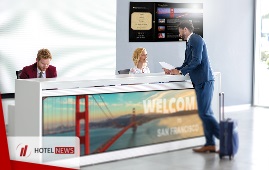
Technique 129 Encourage Fond Farewells from Housekeepers; All housekeepers should thank guests for their business and invite them to return when they see guests exiting down guestroom corridors. If a guest is rolling luggage down a cor- ridor in the AM hours, it is evident that s/he is checking out. Technique 130 Clean Guests’ Windshields; Each morning, the hotel should randomly select approx- imately 10 vehicles of guests who are checking out and clean their windshields. A note can be placed on the vehicle so that the departing guest will notice that the windshield has been cleaned. Technique 131 Offer Auto Snow/Ice Removal Tools; In cold climates, have snow/ice removal tools handy. When a guest checks out, these items will be useful for the guest’s vehicle. For added service, a staff member can clean the vehicle quickly for the guest. Technique 132 Offer Room Keys to Children as Souvenirs; When a guest is checking out with small children, the room key cards should be offered to the children as souvenirs. Children can even be offered craft kits so that they can deco- rate the key cards with jewels, stickers, or pipe cleaners while traveling home. Technique 133 Offer Children Coins Inscribed with the Hotel’s Logo; When a family with children is checking out, the children can be given gold or silver coins that are inscribed with the hotel name and logo. Technique 134 Let Guests Take $1 Bills; The front office manager should fill a glass fish bowl with $1 bills. One morning per week, the bowl can be placed on the front desk with a sign that reads: “If you are checking out, please take a few of these for the road.” The actual sight of cur- rency is actually much more powerful than simply discount- ing a guest’s folio. Technique 135 Inform Guests of Potential Bank-Related Issues Associated with the Use of Debit Cards; Debit Cards can be a challenge when using them at a hotel. Any guests using a debit card should be made aware of how the bank “holds” the money. It can be helpful to have the desk clerk explain this to the guest beforehand. No matter what experience the guest had at the hotel, if s/he has issues related to finances, such issues can ruin an otherwise positive experience. Technique 136 Offer to Store Items for Frequent Guests; If you have a guest that stays weekly, offer to store some of his/her items so that s/he do not have to take them home each week. Even if s/he does not want to utilize this service, the offer will likely mean a lot. Technique 137 Send a Gift Home to a Child; If a guest is traveling alone on business, but the property management system indicates that s/he has stayed in the past with a child then consider asking the guest if s/he would like a small gift to take home to the child. Technique 137 Give Some Fresh Vegetables or Herbs; If the hotel has a garden and a vegetable or fruit is ripe, offer the guest at check-out 1–2 pieces to take home (similar to how friends and family share items from their home gardens). Or, have a herb garden growing inside one or more lobby win- dows and ask the guest if s/he would like to cut some herbs to take home.
Create: Jun 23, 2020 Edit: Aug 13, 2020 Hotel Management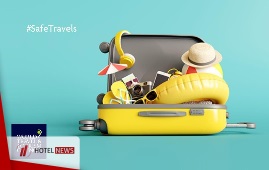
World Travel and Tourism Council Presents; Safety and health stamps to 6 countries and 8 cities This stamp allows travelers to get to know the governments and tourism businesses that have complied with global health standards following the Corona outbreak, and to experience safe travel. Saudi Arabia Turkey Slovenian Bulgaria Portugal Mauritania Barcelona (Spain) Madrid (Spain) Segovia (Spain) Mexico (Mexico) Concone (Mexico) Yucatan (Mexico) Baja California (Mexico) Ontario (Canada) Competent occupations in the field of travel and tourism can also receive this stamp after the implementation of the safety and health protocols prepared by this organization.
Create: Jun 21, 2020 Edit: Jun 23, 2020 International News
Saudi Al-Akhbariya Channel reported; 1,600 hotels in Mecca have experienced great loss. The hotel industry in Mecca and Medina depends on Umrah and Hajj. Since Umrah was shut down, 1,600 hotels in Makkah have been vacated and their owners felt great loss.
Create: Jun 15, 2020 Edit: Jun 16, 2020 International News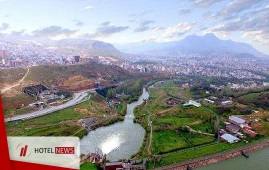
"Abdul Hamid Hamidi," the head of the Hoteliers Association of Kurdistan Province, explained in an interview with HotelNews; The hotels in the province are in good condition every year and experience a occupancy rate of 70 to 80 percent. Due to the reopening of tourism facilities and accommodation centers, this year we have witnessed a significant presence of travelers and tourists in the province. However, the publication of contradictory news regarding the closure of tourist facilities and the non-acceptance of travelers, especially in the Oramanat region, caused this rate to decrease by 20 to 30 percent. In general, hotels and accommodation centers in the province have experienced a 50 to 60 percent occupancy rate over the past few days.
Create: Jun 8, 2020 Edit: Jun 8, 2020 Regional News
Technique 112 Host Menu Tastings for Staff; All frontline staff in the hotel should have knowledge of the restaurant menu items. This knowledge is needed in order for them to feel confident in making recommendations and upselling. In this effort, staff should periodically be invited to taste items. Technique 114 Hang a Mirror in the Service Area; Hang a full-length mirror in the expo area of the kitchen so that servers can check their appearance throughout their shift. Technique 115 Identify Congestion Points in the Breakfast Buffet; Due to the sheer number of guests that dine in the hotel for breakfast, it is the most important meal period for the hotel to get right. In a buffet setting, management should routinely observe where guest congestion is prone to occur during the buffet experience. Often, congestion points can be alleviated with better signage, altered buffet layout, and by repositioning certain items. Technique 116 Improve Efficiency at the Made-to-Order Egg Station; Often, the congestion point in the hotel breakfast expe- rience is the made-to-order egg station. Typically, this con- gestion occurs because the chef working the station is not properly trained. The chef should be trained to begin heat- ing the saute pans as s/he sees guests approaching the station. In addition, toppings should be finely diced so that they can saute faster. When no guests are in view of the station, s/he can practice his/her flipping speed and accuracy by using a slice of bread in the pans. S/he should also be well stocked with both egg whites and egg substitutes because the demand for these items is increasing as baby boomers age. A well-trained chef should be able to prepare three orders simultaneously at the station (always keep a fire extinguisher at the station). Technique 117 Improve Efficiency at the Belgian Waffle Station; A common congestion point in the breakfast buffet area is the Belgian waffle station. Substituting the typical waffle irons with irons that can produce four miniature waffles simulta- neously should alleviate some/most of the congestion. Rather than taking a full-sized Belgian waffle (which is too large for most guests who also want to try other foods), the guest can instead take two mini-waffles. Technique 118 Have a To-Go Breakfast Option Available; If a guest requests an early wake-up call or asks to get a cab at a time before the restaurant opens, offer a bagged breakfast that can be made up the night before. Items in the to-go break- fast bag might include a muffin, breakfast bar, apple, bottled water etc. This to-go breakfast does not have to be complimen- tary; this gesture of goodwill goes a long way. Technique 119 Offer Customizable Chef Hats to Children; Rather than standard coloring sheets, the restaurant should instead have paper chef hats for small children that can be colored and decorated. Technique 120 Offer Origami Kits to Children; Rather than standard coloring sheets, the restaurant should instead have origami kits for elementary-aged children. Technique 121 Let Small Children Play with Dough; If the restaurant uses bread, pastry, or pizza dough in any recipes, small children should be offered a small piece of dough on a paper plate that they can play with while waiting for meals. Technique 122 Inscribe Surprise Messages Inside Coffee Cups; The inside of some of the restaurant’s coffee cups can be randomly inscribed with messages such as “We hope that you are enjoying your stay!” Technique 123 Use Strong Language When Greeting Restaurant Guests; Restaurant greeters should never use the word “JUST” when verifying the number of guests in a dining party. If there are “just” 1 or 2 people, the word diminishes the worth of the diners who are present. Welcome all equally. Technique 124 Extend VIP Invitations to Valued Guests; If a local is dining in the restaurant, invite him/her to be a VIP at an upcoming menu tasting or wine tasting. Technique 125 Play Peek-A-Boo; Servers should be trained that one tactic that can be used to bring a smile to a baby’s face is a quick game of peek-a-boo while visiting the table. Technique 126 During busy breakfast periods, often tables cannot be turned because there is a lag in bussing, cleaning, and reset- ting them. Bussers should be staffed heavily, bussers should be compensated well (maybe through a tip pool), associates from other departments should be cross-trained as bussers, and ample supplies should be on hand for table reset. Often, when associates from other departments aid in bussing and reset- ting, they are so poorly cross-trained that their help is ineffi- cient and can even get in the way. Furthermore, the breakfast restaurant supervisor or manager should have a laminated checklist of all table resetting supplies and should check the par levels of all of these items before a shift begins. Technique 127 Have a Children’s Treasure Chest Available; Treat the child guest with a treasure chest of toys. The hotel does not have to spend a lot of money on the toys; they can be from the dollar store or similar. Let the child pick a toy from the chest. The child will be happy and excited and the adult guest will be very appreciative. This is an excellent and inexpensive way to exhibit outstanding guest service at the commencement of a dining experience. Technique 128 Use Language That Encourages Dessert Upselling; “Are you too full for dessert?” When a server asks this question it assumes that the guest does not want dessert and s/he wants to turn your table; not a positive ending to a dinner. Instead, servers should be taught to upsell desserts with lines such as “We have fabulous desserts;” “I hope you left room for one;” and “Let me tell you about them.”
Create: Jun 3, 2020 Edit: Aug 13, 2020 Hotel Management
Technique 86 Display High Quality Outdoor Furniture; All outdoor furniture should be of high quality (even at limited service and economy properties). Viewing outdoor furniture subconsciously sets the tone for what the guest will receive once inside. Technique 87 Keep Elevator Flooring Clean; Due to the use of rolling suitcases, one of the biggest prob- lem areas with regard to public space cleanliness is the elevator floor. Staff should be trained to check and clean the flooring in the elevators several times per shift. The cleanliness of the ele- vator is a factor in initial perception formation and also influ- ences guests’ perceptions throughout their stay. Technique 88 Offer Branded Rubber Duckies; When a family with a small child or baby passes a house- keeping cart in a corridor as they are returning to their gues- troom, the housekeeper should offer the family a rubber duckie that is branded with the hotel’s name/logo. ghout their stay. Technique 89 Create a Photo Zone; Photo Zone—With Selfies being the “in thing”, cre- ate a backdrop, banner, or something unique to the hotel (including your logo or hotel name) where guests can take pictures of themselves or, if they want a photo with a cam- era, an employee can easily take a picture of the guests. Encourage guests to share it on social media or a blog. This is another way for guests to remember their experience in a positive way. Technique 90 Routinely Eliminate Scuff Marks; At least two times per week, a member(s) of the engi- neering team should inspect all public corridors and remove scuff marks from walls with cleaning products such as Magic Erasers. This task should be part of the engineering team’s preventative maintenance schedule. Technique 91 Play Music in the Lobby; Music that matches the brand personality of the hotel should always be played in the lobby. Employees should under- stand the value of the music in reinforcing brand personality. Technique 92 Scent the Lobby; The hotel’s lobby should be scented year around with the same fragrance. Repeat guests will recall the scent when they return. This strategy can be achieved through plug-in aroma- therapy products or by burning scented candles. Technique 93 Afford Adequate Attention to Restroom Cleanliness; The public restroom cannot take a “rest” from service. The cleanliness and messiness of a restroom set the tone for other facets of a guest’s experience. If a guest sees a dirty restroom, automatically s/he will have a negative impression of the hotel. Technique 94 Use Bright Lighting in the Restroom; The hotel’s public restrooms should have very bright flu- orescent lighting. Such brightness helps the restroom appear clean. Technique 95 Give Back-of-the-House Tours; When a potential catering and conference client arrives for a site visit, show him/her the back-of-the-house areas first. Including the back-of-the-house demonstrates that the hotel pays enough attention to detail to keep those areas neat and orderly similar to the front-of-the-house. This effort also aids in making the potential client feel as if s/he is getting to know the team. Technique 96 Provide Employees with Business Cards; Have business cards with all the pertinent hotel informa- tion. Leave space on the card for an employee to be able to handwrite his/her name and position. Should a guest need hotel information, the employee can hand them out. This effort serves as a personalized service and the guest will know who to ask for if they need anything. This gesture comes in handy on many occasions and is fast and personalized as well. Technique 97 Offer Branded Gloves; If a guest is exiting the hotel in the winter time without gloves, offer a complimentary pair of gloves branded with the hotel’s logo. Technique 98 Display a Looking Glass; If a window in one of the hotel’s public spaces has a nice view, then affix a looking glass on a string to the wall next to the window. Technique 99 Screen the Outdoor Break Area from Guest View; The hotel needs to have an outdoor break area for asso- ciates that are 100 percent screened from guest view. Such screening can be achieved with landscaping and/or decorative fencing. When a guest sees hotel associates on break smoking cigarettes, this is one of the biggest ‘experience breaking’ prob- lems in the industry and is also one of the most common. Technique 100 Offer Wagon Rides for Small Children; The hotel should have wagons in the lobby that are cus- tomized with a seat and side paneling so that families can give their children safe rides to their guestrooms. Custom- ized wagons can also be available for pet transportation to the guestroom. Technique 101 Have a Child-Sized Luggage Cart Available; Just as some grocery stores have child-sized grocery carts, a hotel can have a child-sized luggage cart. The child can help co-create the lodging experience by placing his/her suitcase on the small cart and pushing it to/from the guestroom at check-in/out. Technique 103 Make Bicycles Available; If the hotel is located in a bicycle-friendly area, then have some bicycles and helmets available to the guests at no charge. Guests can sign a liability waiver form and borrow the bicycles when desired. Technique 104 Denote Empty Parking Spaces; When the hotel’s parking lot or garage is near maximum capacity, helium balloons should be placed in the remaining parking spots. Viewing the balloons from a distance will allow guests the opportunity to find the open spots without wasting time or fuel. Technique 105 Encourage Clutter-Free Storage Areas; Any areas that are visible to the guests when a door is open (e.g., service area, behind the front desk, office, storage room, etc.) should be free of clutter and anything that can be construed as unsanitary. Technique 106 Conduct Signage Audits; At least once per year, a 3rd party who has never been inside the hotel before should be asked to do an internal and external signage audit to confirm that signs are accurate and are not confusing (particularly directional signs). The signage audit could be traded for a room night. Technique 107 Print Hometowns on Nametags; All associates should have their hometowns printed on their nametags because this information helps facilitate con- versation with guests. Technique 108 Display Photos of Famous Locals; Display pictures of famous people from the local or sur- rounding area in the hotel’s public spaces—doing so helps connect the guest to the hotel. Technique 109 Offer Swimming-Related Amenities in Pool Area; If the hotel has a swimming pool, guests love the extras of a pool experience, especially in very hot weather. These items can be misters, cold washcloths, ice water, etc. Technique 110 Offer to Augment Diving Toys with Gold or Silver Coins; If the hotel has a swimming pool, if children are seen diving for coins, they should be given gold or silver coins inscribed with the hotel name/logo to use instead. They can keep these as souvenirs. Technique 111 Keep a Well-Stocked Bookcase; The hotel should have a bookcase in a public area from which guests can borrow books (including children’s books) to read or games to play during their stay. Some books should be about the local area.
Create: May 2, 2020 Edit: Aug 13, 2020 Hotel Management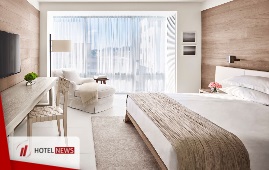
Technique 67 Use Solid White Bed Linens; All bed linens and bed coverings, including the foot scarf and pillow shams, should be solid white. A solid white bed subconsciously signals cleanliness and spaciousness. Technique 68 Place a Follow-Up Call; After the guest checks in, the front desk clerk (or another desired employee) should call the guestroom to see if everything meets the guest’s expectations. This person should give the guest their name and instruct them to call them if anything is desired. Technique 69 Have Different Color Towels Available; Have different color towel sets available upon request for groups of friends staying together who do not want to get their towels mixed up. These colored towel sets can also be available upon request if someone in a traveling family has a cold and wants to minimize the risk of spreading germs to other mem- bers of the family. Technique 70 Encourage Guests to Take Hangers Home; Rather than affixing clothes hangers to the clothing rod so that guests cannot depart with them, take the oppo- site strategy and invite guests to keep a hanger. Ask a local art studio or vendor to creatively decorate the hangers to include the name/logo of the hotel and the name/logo of the art studio. Such decorated hangers placed in the guest’s residence closet at home are good brand reinforcement for both the hotel and studio. Technique 71 Display Towel Animals; When refreshing a room, if a housekeeper detects that a family with a child is occupying the room then s/he should fold one of the guestroom towels into an animal formation. Straightforward instructions for basic animal designs can be found on YouTube. Technique 72 Have a Celebrity Make Your Wake-Up Calls; As a surprise tactic, ask a well-known celebrity or come- dian to prerecord the wake-up call message that is used in the hotel. Technique 73 Have Surprise Amenity Bags Available; Do guests ask or “take” your amenities such as sham- poo, lotion, or soap? If so, take what can be a negative and turn it into a positive. Have some amenity bags made of the basic amenities in a small mesh type bag. When a guest asks for some, present them with this and see if they would like it. What a nice surprise “gift” it will be and since you would be giving them the product anyway, for a few cents more, it exceeds their expectations. Technique 74 Send Surprises to Rooms; Every front desk agent should be empowered to pick two guestrooms per shift to target with a surprise amenity. The surprise amenity should be an item indigenous to the local area such as a slice of key lime pie in Key West. Technique 75 Recognize Special Events; If a guest mentions a birthday, anniversary, wedding, or other celebratory event either at check-in or at the time of reservation, surprise him/her with a bottle of champagne or something special with a notecard with your information. The guest will remember this forever. Technique 76 Offer Photo Opportunities for Guests; Place a note in the room stating that the guest(s) can stop by the front desk at any time and an agent will take a photo of the guest(s) in the lobby and the photo will be placed on the holiday card that the guest(s) receives from the hotel. In addition, a past photo of the guest can be placed in a frame on the nightstand before the guest arrives. If these photos can be uploaded into the property management system then they can be used to help the front desk agents memorize the names of the regulars. Technique 77 Have Occupation Costumes Available; If a telephone reservation is being made for a family with a young child, then the agent can ask the parent making the reservation if the child would like an occupation costume in the guestroom upon arrival. The agent can list the costumes that the hotel has and let the parent indicate the most suitable one (e.g., doctor, veterinarian, firefighter, etc.). Technique 78 Surprise Toddlers with Bath Toys; If accommodations are being used by a family with a tod- dler, housekeeping can place an unopened package of bath toys in the room. Technique 79 Pose Stuffed Animals in Fun Positions; When servicing a room with children and there are stuffed animals or something similar, the housekeeper should make it look fun by putting the animals in clear view of the bed in a way that will be enjoyable for the child to see when s/he returns to the room. Technique 80 Encourage Postcard Usage; Place a postcard with a picture of the hotel on the gues- troom desk. The postcard should be stamped with prepaid postage. Technique 81 Surprise Guests with Personalized Candy; Every week strategically select 10–20 incoming guests from the centralized reservation system and order candy wrappers personalized with their names. Place the personal- ized candy in their rooms during their stay. Alternatively, at a bare minimum, have candy on hand with customized wrap- pers displaying the hotel name/logo. Technique 82 Replace Old Coffeemakers; If in-room coffeemakers with glass carafes are still being used, they should be replaced with coffeemakers that drip directly into the drinking cup. Technique 83 Review In-Room Information for Accuracy; At least once per quarter, hotel management or staff should check that the information in the in-room hotel information book is up-to-date and accurate. Technique 84 Check Telephone Labeling for Accuracy; At least twice per year, the buttons on the telephones in the guestrooms should be checked for labeling accuracy. Technique 85 Offer to Name a Room After a Frequent Guest; If a guest stays at your property more than 50 nights per year, then offer to name a guestroom in honor of him/her. A small plaque can be displayed in the room or corridor.
Create: Apr 7, 2020 Edit: Aug 13, 2020 Hotel Management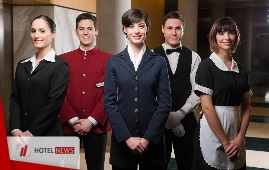
The Check-In Experience Technique 45 Use Strong Verbal Greetings at Check-In; A front desk associate should never address a guest with the phrase ‘checking in?’ Such a greeting does not engender a spirit of hospitality. Would an initial greeting to a visiting friend at your home be ‘staying with me?’ Technique 46 Eliminate the View of Employee Trashcans; A trashcan does not engender a sense of hospitality. Trash- cans used behind the front desk should be positioned so that guests cannot see them. Technique 47 Offer Infused Water at Check-In; During prime check-in hours, keep a beverage dispenser of infused water in the lobby area. Guests can be instructed to help themselves to the water that can be infused with flavors such as strawberry or cucumber. Technique 48 Dispense Information on Tour Bus; If your hotel has tour buses staying at the hotel, have a representative get on the bus before the guests disembark. The hotel representative will have an opportunity to welcome the guests to the hotel, explain outlet hours, and any perti- nent information regarding their stay. If they have to wait in line to give a credit card, they can be instructed at this time. Once they enter the hotel you will lose the “togetherness” of the group. Technique 49 Designate a Children’s Check-In Spot; If a significant number of family check-ins are expected on a given day, designate a spot at the front desk with a sign reading ‘children’s check-in’ and place a step-stool at the spot so that children can see over the front desk. As a component of the children’s check-in, the child could be asked if s/he would like to provide a signature on a document. Such a signature request might be the first time the child has ever been asked for his/her signature. Technique 50 Use High Quality Pens at the Front Desk; Always have an ample supply of high-quality pens at the front desk for guests to use while checking-in. At least one person per group must physically touch the pen. The use of a high-quality pen is a subconscious signal of attention to detail. Technique 51 Incorporate a Guessing Game for Children; Keep a cardboard box with a hole in it behind the front desk. When a child is checking-in with parents, if the front desk is not too busy, ask the child if s/he would like to feel inside the hole and guess what the box contains. If the child guesses correctly, then s/he wins a prize. Unique objects such as a pine cone can be the touch-item in the box. Prizes can be small trinkets ordered from a vendor such as Oriental Trading Company. Or, a series of three boxes can be set-up and if the child guesses all three items correctly then s/he can be issued a certificate. Technique 52 Offer a Pet; When a child is checking-in with parents, ask the child if she brought a pet. When she says ‘no’ ask her if she would like a pet for the duration of her stay. When she says ‘yes’ then let her pick a fish from a fish tank and put it in a fish bowl in her guestroom. Technique 53 Have Word Search Puzzles and Coloring Sheets at the Front Desk; Welcome the children checking in as well as the adults. Surprise them with a word search puzzle or coloring page directly relating to your hotel. Such items occupy the child’s time as well as make them feel welcome. Technique 54 Offer a Sticker Treasure Hunt; At check-in, young children can be given sticker books. They can collect more stickers for the books by either visiting various locations around the hotel or by visiting local attrac- tions. This effort, in essence, serves as a treasure hunt by means of the sticker book. Technique 55 Host a Nutella Party; On a day with a large number of family check-ins, a sign can be placed at the front desk announcing an evening Nutella party for the children. Technique 56 Offer a Dog Training Class for Children; If someone on the management team has a well-trained dog, then s/he can periodically place a sign in the lobby read- ing ‘Dog Training Class at 4:00 PM.’ The manager can bring his/her dog and demonstrate some of the commands that the dog knows for the children. Technique 57 Allow Guests the Opportunity to Jog with Members of the Management Team; At check-in, guests can be invited to go on a group jog with a member of the hotel’s management team at a set time in the A.M. The group jog can occur every morning by rotating the responsibility between several members of the manage- ment team who enjoy jogging. Conversations during the jog will help solidify bonds between the hotel and guests. Technique 58 Roll Out the Red Carpet; Periodically roll out a red carpet near the entrance of the hotel (or inside the lobby leading to the front desk). Manage- ment can be creative with the signage which can read “Wel- come to Hotel X, where red carpet treatment is the norm” or “Red carpet treatment at a value.” Technique 59 Offer Treat Bags for Pets; How you treat a guest’s pet is very important. If a guest pays for a pet to stay at a hotel, then the pet is likely consid- ered a member of the family. Create a treat bag, distributed at check-in, which contains a treat, directions on where to take the pet to go out, a poop bag, and the “rules” for the pet room. Technique 60 Remember Pet Names; Front desk agents should be taught to record pet names in the guest history section of the property management sys- tem. Along with the pet’s name, the agent should also insert a short (3–4 words) physical description of the pet. When the pet revisits, s/he should be addressed by name. Technique 61 Offer Aromatherapy; If a guest mentions that s/he is stressed for any reason (e.g., travel or work frustrations), offer him/her a plug-in aro- matherapy treatment that can be used in the guestroom to relieve stress. Technique 62 Offer Free Upgrades on Occasion; If a guest mentions that s/he is stressed for any reason (e.g., travel or work frustrations), offer him/her a complimen- tary upgrade to a suite-style room (if available). Technique 63 ‘Google Image’ Guests with Unique Names; If a front desk agent has some downtime between tasks, then s/he should be taught to search the arrival list for guests who have visited in the past and who have unique names (e.g., Vincent Magnini). The agent can then “Google Image” those names so that the guest can be greeted by name upon arrival. Technique 64 Create a Strategic Alliance with a Car Wash; The hotel could establish a strategic alliance with a mobile waterless car wash provider. Each front desk associate can be empowered to select one incoming guest each day and ask them if s/he would like a complimentary exterior car detailing during their stay. Conversely, the 10th guest checking in every day could be made the complimentary offer to help ensure fairness. Technique 65 Record Guests’ Preferences; Repeat guests want to be recognized. Frontline staff should utilize the computer system to keep information on the guest’s desires such as room type, location, favorite drink, etc. Technique 66 Drive Bookings to the Proprietary Website; If a front desk agent sees that a regular guest is using a 3rd party OTA to book his/her room, the agent should inform the guest that equivalent rates can be found on the hotel’s propri- etary site. It should be explained that the savings in fees and commissions by the hotel would be used for additional guest services and amenities.
Create: Mar 14, 2020 Edit: Aug 13, 2020 Hotel Management
